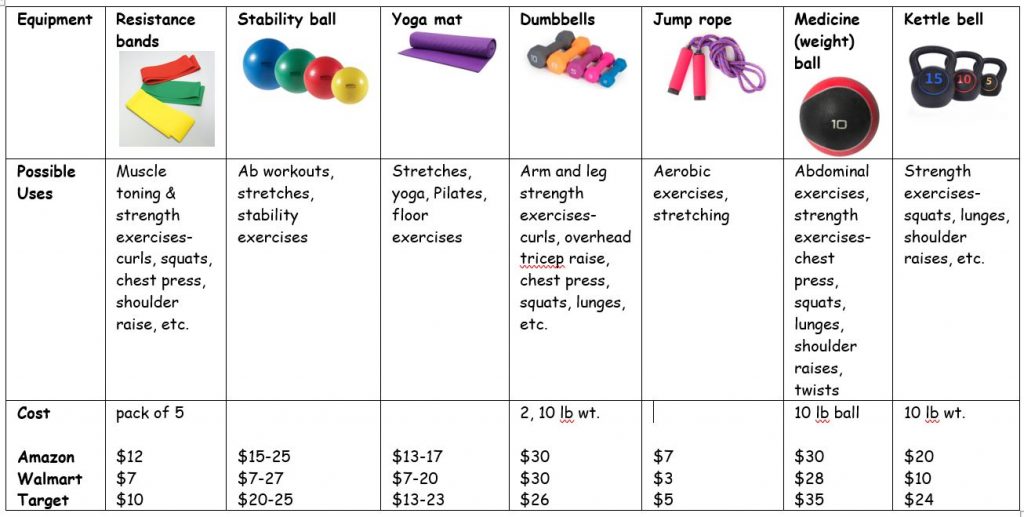Today @ MAND – Thanksgiving Edition
Although the holidays may look different this year, the end of the year always reminds us of our love of food, good conversation, and spending time with loved ones. Hear from Nancy as she validates normal eating around the holidays. Shelby also gives us some ideas for home fitness and getting our heart rate pumping at home! Wishing everyone a Happy Thanksgiving!
Food, Holidays and Normal Eating
At this time of the year, when holiday food takes center stage, our clients may need to be reminded that overeating is part of normal eating. Here is Ellyn Satter’s definition of “normal eating” (www.EllynSatter-Institute.org):
• Normal eating is going to the table hungry and eating until you are satisfied. It is being able to choose food you like and eat it and truly get enough of it—not stopping eating just because you think you should.
That is, did you stop eating breakfast today because the oatmeal in your bowl was all gone? Or were you truly satiated? At the end of lunch, did you stop at your one-bowl-of-salad allotment, even though you wanted more? If you are “feeling hungry all the time,” you likely ARE hungry; your body is requesting more fuel. Trust it. You’ll end up eating more sooner or later, so please honor that hunger and eat more now.
• Normal eating is giving yourself permission to eat sometimes because you are happy, sad, or bored, or just because it feels good.
Yes, food is a way we celebrate, mourn, and entertain ourselves. Sometimes we even need a hug from food, despite being not hungry. One bowl of ice cream will not ruin your waistline nor your health forever. That said, routinely overindulging in ice cream as a means to distract yourself from life’s pain will not solve any problem. If you are using food as a drug, to not start eating can be easier than stopping once you have started.
•Normal eating is leaving cookies on the plate because you know you can have some again tomorrow, or it is eating more now because they taste so wonderful.
If you are banning fun foods from your house because you can’t eat just one cookie, think again. Denying yourself permission to enjoy a few cookies boosts the urge to eat the whole plateful. I call that “last chance eating.” You know, “last chance to have Christmas cookies, because on January 1 I am back on my cookie-free diet.” Depriving yourself of cookies leads to binge-eating. Try planning in forbidden foods every day. They will soon lose their power.
•Normal eating is overeating at times, feeling stuffed and uncomfortable. And it can be undereating at times and wishing you had more. Normal eating is trusting your body to make up for your mistakes in eating.
Yes, even normal eaters overeat. It’s normal to have too much Thanksgiving dinner, birthday cake, or Sunday Brunch. When competent eaters overeat, they listen to their body’s signals – and notice they take longer to get hungry again. That is, if you have a hearty brunch, you will be less hungry that evening. Trust me. Rather, trust your body.
Hunger is your body’s way of telling you it has burned off what you gave it, and now it is ready for more fuel. You want to honor hunger and eat intuitively, like kids do. Kids eat matter-of-factly; they stop eating when they are content. Adults (especially weight-conscious dieters), don’t eat when they are hungry, then don’t stop when content. Rather, they “cheat” and guiltfully stuff themselves with forbidden foods —last chance before the diet starts again!
• In short, normal eating is flexible. It varies in response to your hunger, your schedule, your proximity to food, and your feelings.
Many people very rigidly eat the same foods every single day. A registered dietitian can help add variety (more nutrients), flexibility, and more joy to eating. Food can and should be one of life’s pleasures, both during the holidays and in the midst of the pandemic.

Sports nutritionist Nancy Clark MS RD CSSD counsels both competitive athletes and casual exercisers in her successful private practice in the Newton.. She has extensive experience helping active clients—from “ordinary mortals” to Olympians—win with good nutrition. Her best-selling Nancy Clark’s Sports Nutrition Guidebook has sold over 750,000 copies and is now available in a new 6th edition (2019). In addition to inspiring sports-active people to win with good nutrition, Nancy is respected speaker, educating dietitians, trainers, coaches, and other health professionals how to effectively teach the sports nutrition message. For more information: www.NancyClarkRD.com
Home Fitness
With the current pandemic still looming over us and affecting our daily routines, many of us find our fitness routines also being incredibly upended. Though we are aware of the benefits of physical activity such as improved sleep, reduced stress, lower risk of comorbid conditions, etc. as well as the weekly recommendation of 150 minutes, or 2 ½ hours, many of us may be struggling to fit this in or even have the motivation to get into a new workout routine. Switching to a home workout routine isn’t easy, especially if we are used to going to a class for our workouts. It takes some space, creativity, and a lot of intrinsic motivation to stick to a home workout plan. However, it is totally doable and as both an RD and Personal Trainer, I have many great options to consider!
1. Tips for Fitting in Fitness:
- Not a lot of time? Break your 150 minutes into 10-minute chunks
- Schedule it. Put it on your calendar, and make it a priority
- Tweak your schedule. For instance, get up 30 minutes sooner so you can walk before starting work.
2. Explore free workout apps, social media channels, online videos
- Some of my favorites include Nike Training App, Youtube, blogilates, Peloton App (bodyweight, HITT, Bootcamp, and Core classes), and the Activ 5 Trainer App
3. Consider investing in some basic equipment such as a yoga mat, DB’s, and jump rope for example.
- Inexpensive, At-Home Gym Equipment

4. Find something you love and start by creating a routine/habit.
- Not ready to dive into a 45 min class? Try 15 min!
- Explore different ways of moving your body that feel good to you!
Sample Workouts:
Deck of cards: Put these on a deck of cards and randomly select as many as desired to go through. Feel free to create your own with some of your favorite movements too! My husband and I love doing this together at the beginning or end of our day.
- 50 jumping jacks.
- 50 squats.
- Walk up and down the stairs 5 times in a row.
- 30 lunges with each leg.
- Jump rope for 3 minutes.
- 30 Push-ups/wall push-ups
- 30-60 second plank Hold
- 25 calf raises.
- 20 overhead presses with a book or weight (i.e. water/milk jug).
- 30 biceps curls with each arm using a full water bottle, water filled milk jug, can, or a light weight.
- 50 mountain climbers
- 15-20 burpees
- 1 min high knees
- 1 min wall sit

Shelby Burns MS, RD, LDN, is a Boston-based Dietitian and CPT (certified personal trainer) with extensive experience in nutrition education, public speaking, corporate wellness, and personal training. She currently runs her own private practice where she focuses on gut health, chronic health conditions/disease management, and weight loss. When she is not busy running her business, she is active with her two pups, who can often be found running with her throughout the city of Boston!
MAND Blog
Have you thought about posting to the blog, but don’t know what you could contribute?
At MAND we welcome anything from recipes, your personal update, interesting research articles (almost a mini lit review), pictures from events, podcasts people have been listening to, etc. Just keep to less than 500 words and include any resources. Make sure to include your very favorite photo!
Send us an email: newsletter@eatrightma.org.
Board of Directors Recruitment
Massachusetts Dietitians -
Ever considered joining the MAND board? Do you have questions about what is involved?
We'll be posting open positions for 2025-2026 soon and would love to answer any questions you have!
Reach out to admin@eatrightma.org to learn more.
It's a great way to network and help advance our profession!
JOB OPPORTUNITIES
Educational Program Coordinator (Temporary University Specialist) JOB SUMMARY The Department of Nutritional Sciences, a part of the College of Agriculture, Health and Natural Resources, at the University of Connecticut, seeks applicants for a part-time (50%) Online.. Read more >
Dietitian for Elder Service Plan The Registered Dietitian is responsible for implementing the overall nutrition program for the Elder Service Plan. Under the general supervision of the Nutrition Manager, the Dietitian assists with.. Read more >
WIC Nutritionist The Program Nutritionist provides nutrition services to WIC applicants and participants. Responsibilities: -Provides nutrition care to high-risk women, infants and children under the supervision of.. Read more >
MDEF Scholarships
For 2024, MDEF will be giving out two MDEF scholarships and one MDEF Inclusion, Diversity, Equity, and Access (IDEA) scholarship to deserving nutrition students, each in the amount of $1500. Please pass along to any nutrition students or interns who may be eligible to apply!
All applications are due by May 31st

